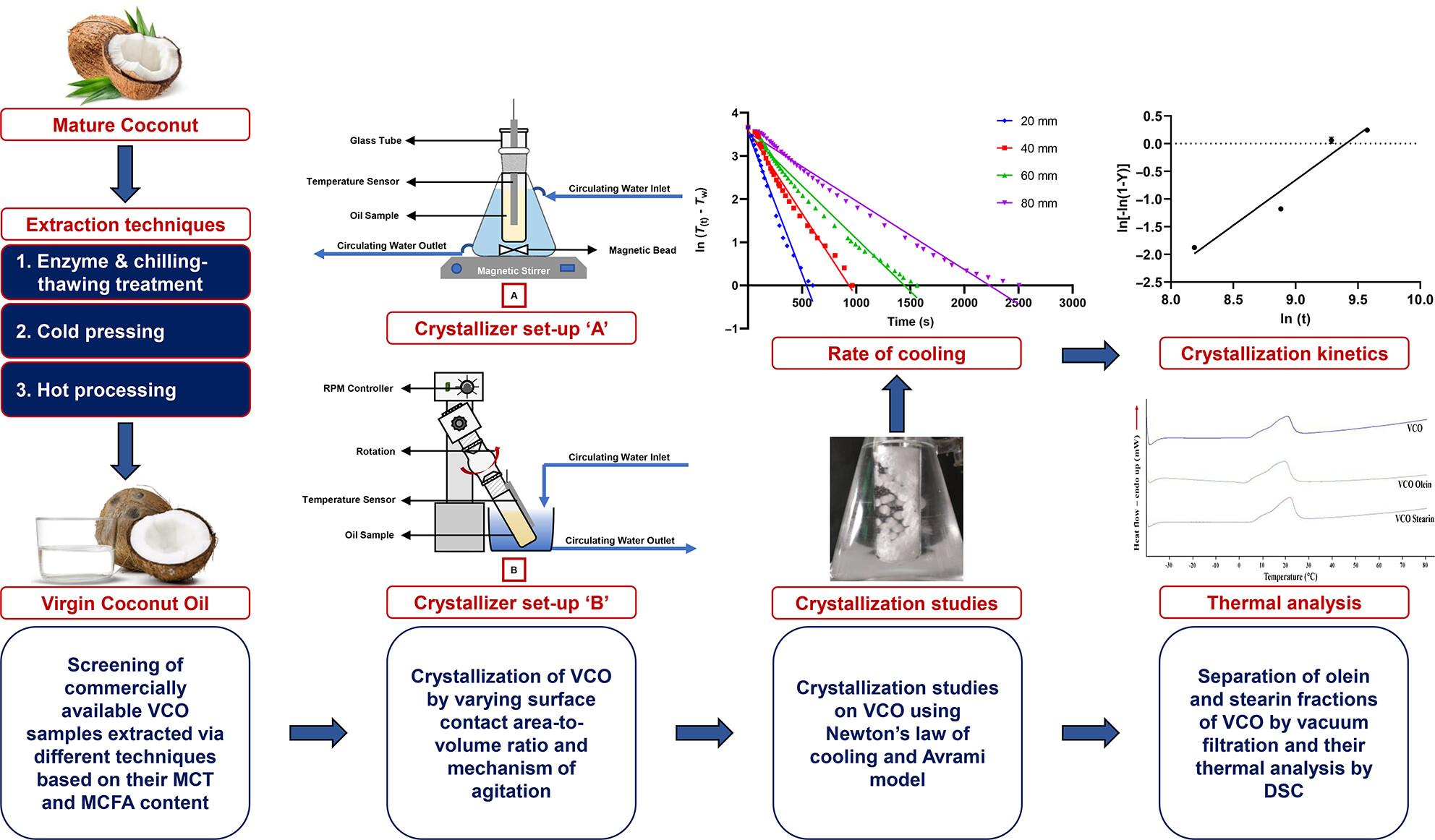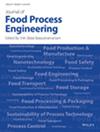Solvent-free crystallization for fractionation of virgin coconut oil: Effect of process conditions on kinetics and crystal properties
Abstract
This research was aimed to conduct solvent-free crystallization and fractionation of virgin coconut oil (VCO). This study investigated the effect of surface contact area-to-volume ratio and mixing conditions on crystal characteristics. Commercially available VCO samples, extracted by different methods, were analyzed for fatty acid and triacylglycerol composition using GC–MS and UPLC–ELSD. VCO extracted through enzyme and chilling–thawing cycles exhibited higher medium chain fatty acids and medium chain triacylglycerols, which was selected for crystallization studies. Isothermal crystallization of VCO at 21°C assessed the effect of scale of crystallizer tube on cooling rate using Newton's law of cooling equation. The smaller tube (20 mm diameter) with a higher surface contact area-to-volume ratio produced 4.1-fold faster cooling and a higher crystallization yield (44%) compared to the 80 mm diameter tube when no agitation was applied. Whereas mixing with a magnetic stirrer produced a large number of nuclei, generating intense crystallization heat, and rendering the crystals inseparable from liquid fraction. The process of VCO crystallization was also studied for kinetics and crystal growth mechanism using the Avrami model employing angled rotation of sample tube during non-isothermal crystallization. Angled rotary mixing produced stable crystals and significantly increased the crystallization rate (t1/2 = 26.86 min) with polyhedral or spherulitic crystal growth (n = 3.25) compared to non-mixing condition (t1/2 = 161.87 min) with restricted linear growth (n = 1.64). DSC analysis of VCO and its fractions obtained after crystallization using the 20 mm tube with angled rotary mixing indicated shifts in their thermogram peaks, suggesting differences in triacylglycerol compositions.
Practical applications
Virgin coconut oil (VCO) is well recognized for its health-beneficial properties, yet its application is limited due to its complex triglyceride composition. The solvent-free crystallization method facilitates VCO fractionation into phases with different melting points without hazardous solvents. The efficacy of this process is highly dependent on temperature, cooling rate, and agitation, which affects crystal morphology and growth kinetics. This study addresses these challenges in the scarcely investigated area of VCO crystallization. The resulting fractions can be customized for specific applications based on their altered functional properties in producing baking and confectionery coatings, salad dressings, and so on. The olein fraction obtained in this study can be utilized in nutraceutical formulations targeting digestive and cognitive health, as it is reported to be rich in medium chain triglycerides. This research optimizes process conditions, suggesting an efficient method for dry-fractionating VCO, which is significantly associated with the food and pharmaceutical industries.


 求助内容:
求助内容: 应助结果提醒方式:
应助结果提醒方式:


